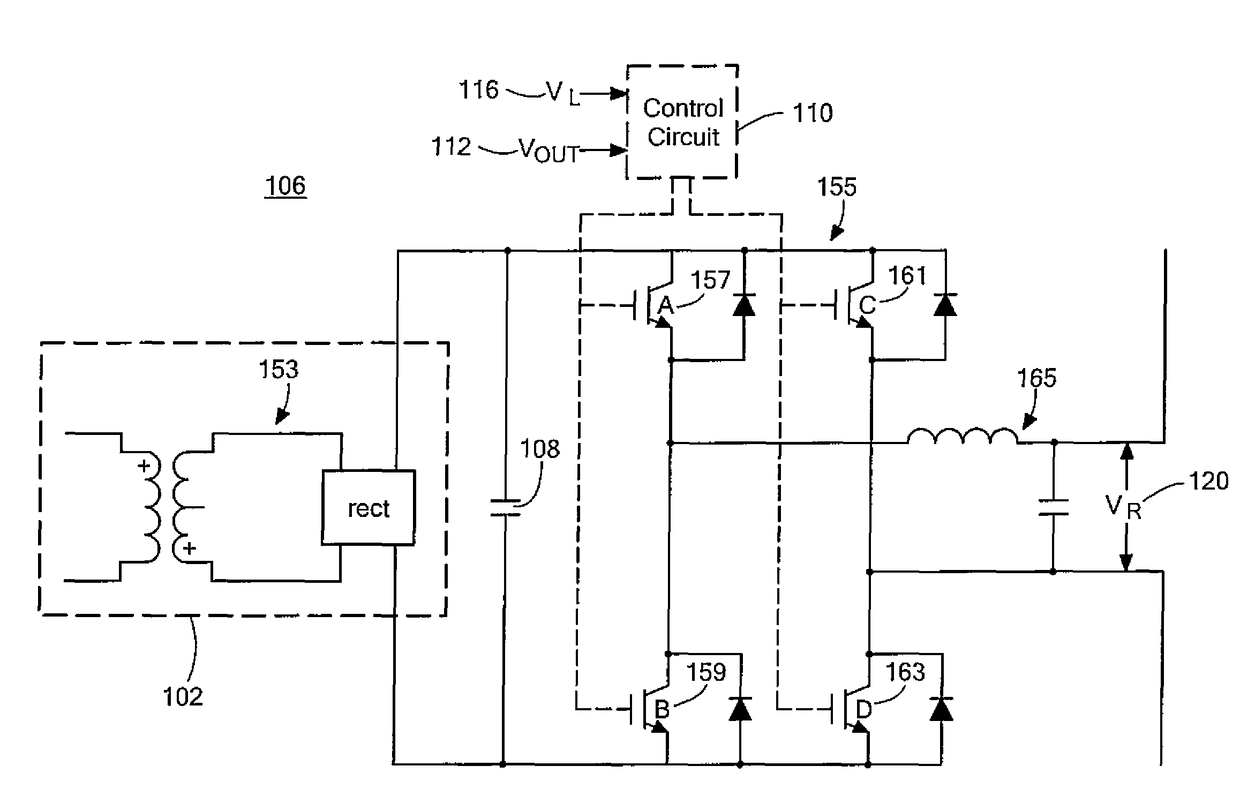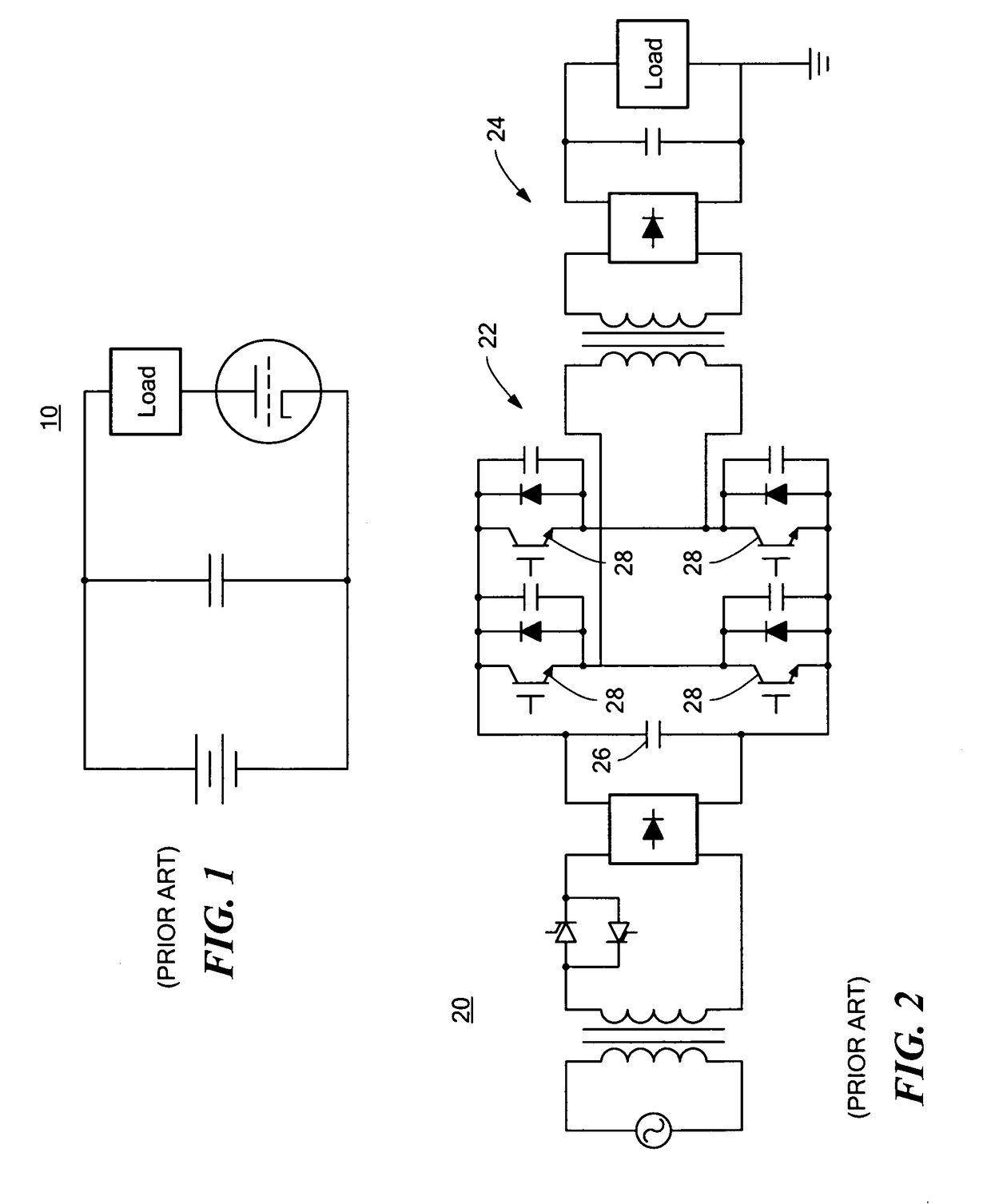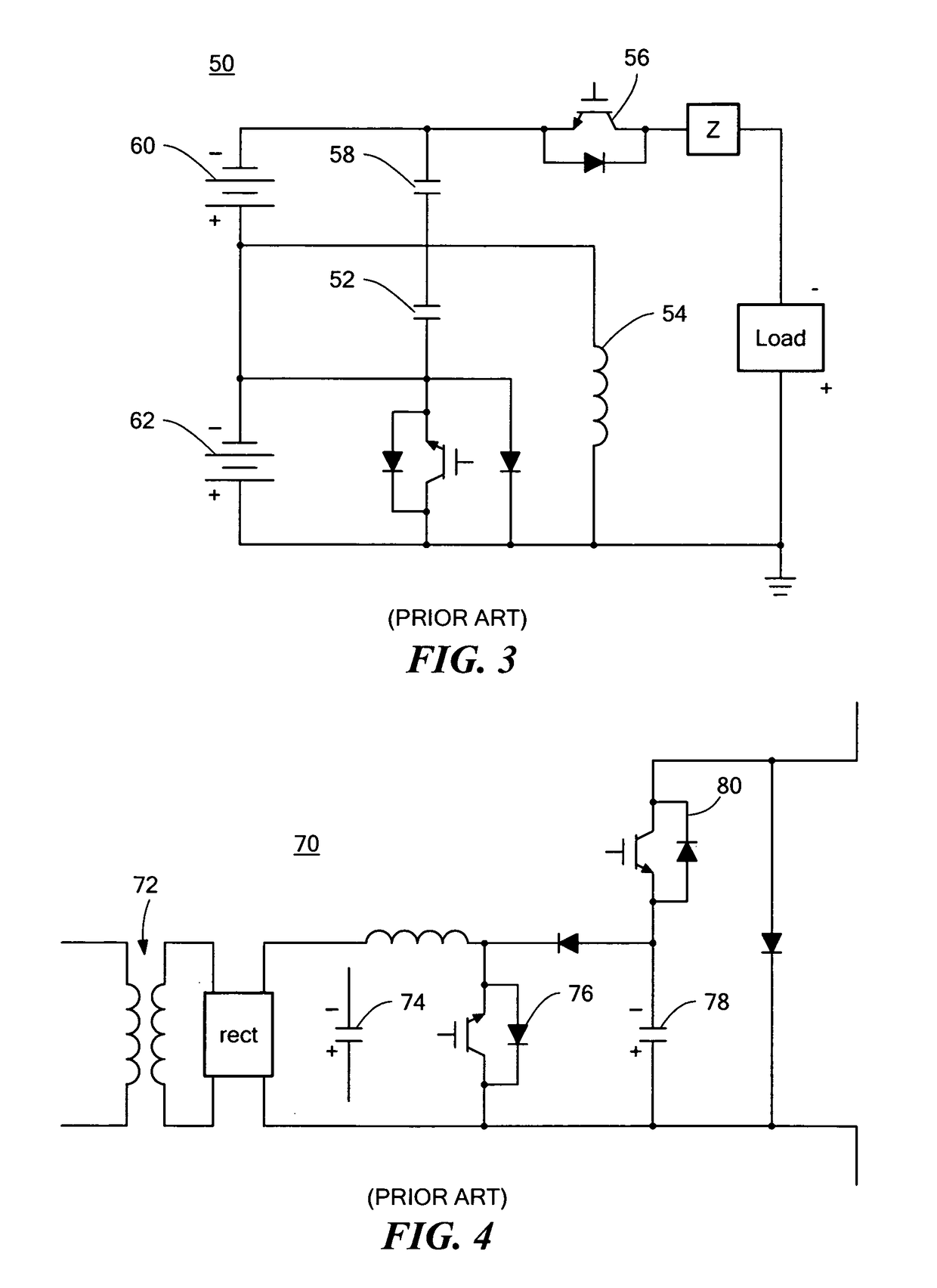System for regulating the output of a high-voltage, high-power, DC supply
a dc power supply and output technology, applied in the direction of dc-dc conversion, power conversion systems, instruments, etc., can solve the problems of reducing the voltage of the modulator capacitor, reducing the peak power required, and the size of the capacitor needed to achieve this is typically too large to be practical, so as to reduce the ripple effect of d
- Summary
- Abstract
- Description
- Claims
- Application Information
AI Technical Summary
Benefits of technology
Problems solved by technology
Method used
Image
Examples
Embodiment Construction
[0047]Aside from the preferred embodiment or embodiments disclosed below, this invention is capable of other embodiments and of being practiced or being carried out in various ways. Thus, it is to be understood that the invention is not limited in its application to the details of construction and the arrangements of components set forth in the following description or illustrated in the drawings. If only one embodiment is described herein, the claims hereof are not to be limited to that embodiment. Moreover, the claims hereof are not to be read restrictively unless there is clear and convincing evidence manifesting a certain exclusion, restriction, or disclaimer.
[0048]As discussed in the Background section above, there are several conventional systems used to regulate droop in long-pulsed modulators. Historically, this has been done by dissipating power with a vacuum tube 10 as shown in FIG. 1. However, the power dissipated in the vacuum tube is substantial. A system with a 10% dro...
PUM
 Login to View More
Login to View More Abstract
Description
Claims
Application Information
 Login to View More
Login to View More - R&D
- Intellectual Property
- Life Sciences
- Materials
- Tech Scout
- Unparalleled Data Quality
- Higher Quality Content
- 60% Fewer Hallucinations
Browse by: Latest US Patents, China's latest patents, Technical Efficacy Thesaurus, Application Domain, Technology Topic, Popular Technical Reports.
© 2025 PatSnap. All rights reserved.Legal|Privacy policy|Modern Slavery Act Transparency Statement|Sitemap|About US| Contact US: help@patsnap.com



